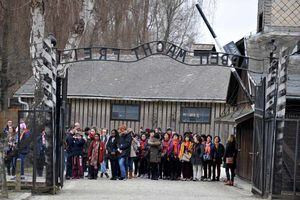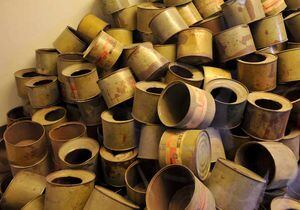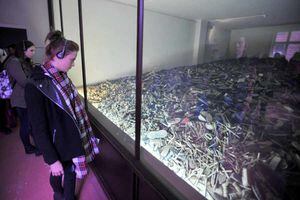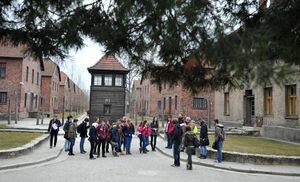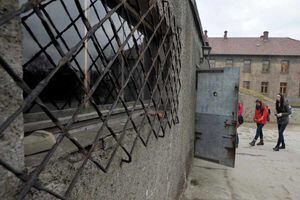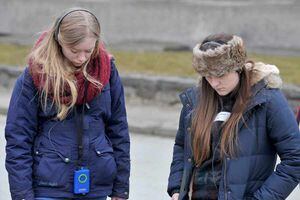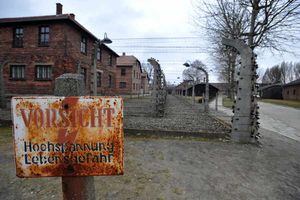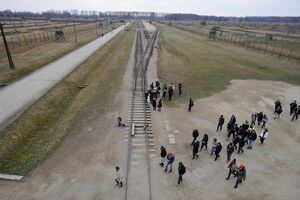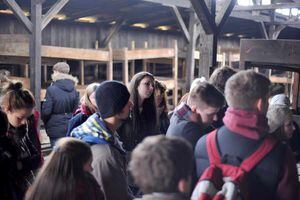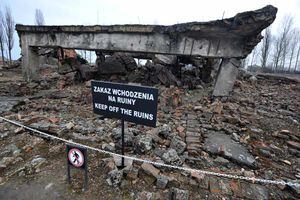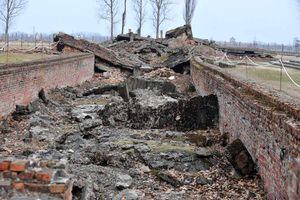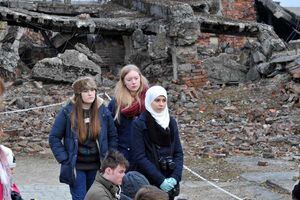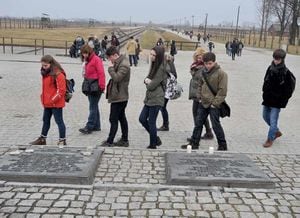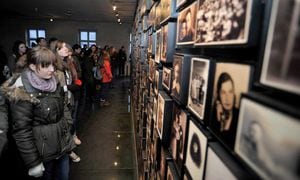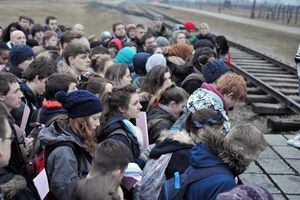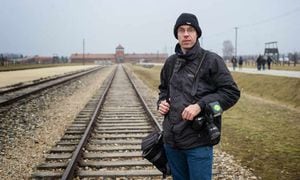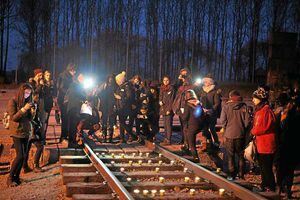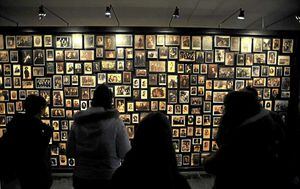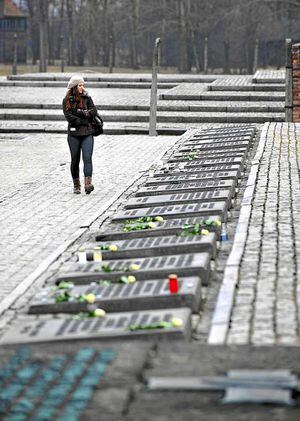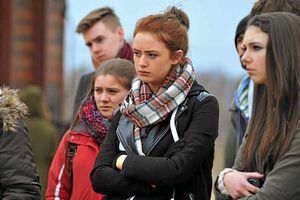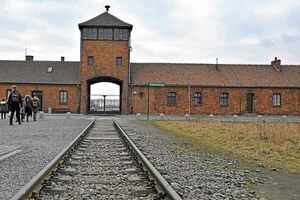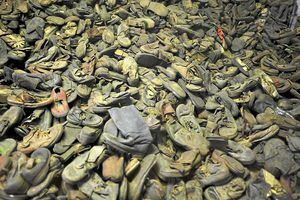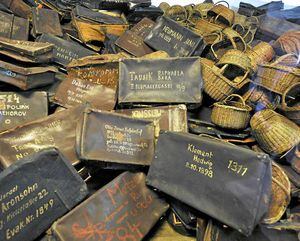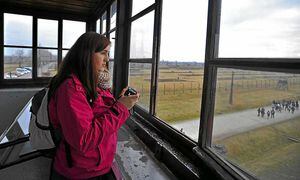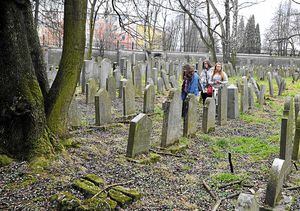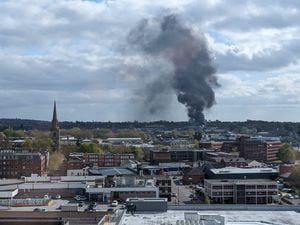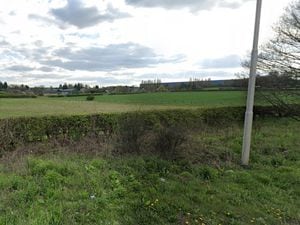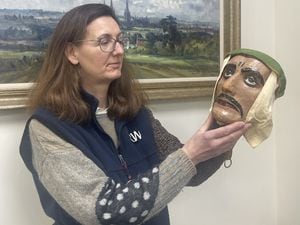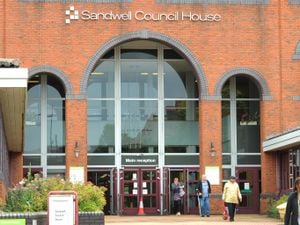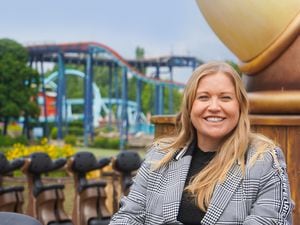Vivid lessons of dark past as pupils in Auschwitz visit
It is one of the darkest chapters in human history. At least 1.1 million prisoners died at Auschwitz – mostly Jews, but also others including Polish political prisoners, Soviet prisoners of war, Gipsy families, homosexuals and people with disabilities.
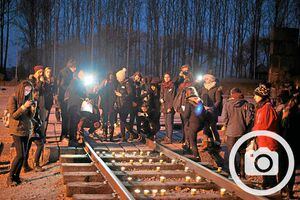
Watching footage of the camps and reading about the horrors is a harrowing experience, but seeing it first-hand is something else altogether.
Nearly 200 students from 100 schools from across the West Midlands were shown around Auschwitz-Birkenau, which is now a museum to the Holocaust.
Some of the children, all aged between 16 and 18, came from schools and colleges in Wolverhampton, Walsall, Staffordshire and Sandwell.
They saw for themselves the crematoria and the gas chambers, as well as the piles of shoes, clothes and other items seized from the prisoners as they entered the camps.
Registration documents for the murdered inmates brought home that these were real people, living not long ago, while mounds of hair mercilessly shaved from men, women and children facing a near certain death were also there to see.
It left a lasting impression.
Klaudia Skubera, a 17-year-old pupil at St Edmund's Catholic School, in Compton Road West, Wolverhampton, was particularly moved by the experience, as some of her family on her grandfather's side died in the camps.
Her grandfather was a survivor of the war.
He escaped from the camps aged 13, but was tracked down by German soldiers and taken to live with his aunt.
Klaudia, of Norfolk Road, Wolverhampton, said: "Just hearing that something like that happened is really emotional, but seeing what they had to go through and seeing what it looks like, you could feel what they went through.
"It puts words into perspective."
She added: "I think I found looking at the belongings of people, especially the number and the children's belongings, was even more emotional than seeing the gas chambers.
"When you look at all these personal things that could have belonged to you, it puts it into perspective."
Birkenau is the site most people associate with the word 'Auschwitz' and the place where the vast majority of victims were murdered.
The barracks were initially built in 1940 to house the increasing number of Poles arrested following the German invasion, which marked the start of the Second World War.
Over time, it was extended and crematoria and gas chambers were built, turning into an extermination camp for the victims of Nazi persecution.
Today, it is a museum, standing as a stark reminder of what can happen when people persecute one another over differences as petty as nationality, religion and sexuality.
The annual joint school trip, which took place on Wednesday and is called the Lessons from Auschwitz Project, was organised by The Holocaust Educational Trust.
It aims to increase knowledge and understanding of the Holocaust based on the premise that 'hearing is not like seeing' and to signal what can happen if prejudice and racism become acceptable. The trust wants to inspire future generations to challenge anti-Semitism, racism and prejudice and preserve the memory of those who died at this and the five other death camps in Poland. And it seems the efforts are working.
Chris Turner, aged 19, who is a student at City of Wolverhampton College, said the experience helped him to appreciate the impact of Nazi propaganda.
He said: "It's an experience everyone should have as it puts life and everything into perspective."
Pupils began their trip with a talk from a Holocaust survivor, before visiting Oswiecim, the town where the Auschwitz death and concentration camps were located and where the local Jewish community lived prior to the start of the war.
The groups were then shown several barracks at Auschwitz I, where they saw the registration documents and the piles of hair, shoes, clothes and other seized items.
After that they travelled the short distance to Birkenau, where they toured the remnants of the barracks, crematoria and gas chambers, before taking part in a reflection ceremony held next to the destroyed crematoria II, where they lit memorial candles and placed them around the structure's remains.
The pupils also took part in seminars before and after the visit, designed to help them prepare for and reflect on their experiences.
Sally Slater, curriculum manager at City of Wolverhampton College, said: "I think it's just a fantastic opportunity for them to contextualise their learning and studies in history. What sticks out most is just the feeling of the place. It's very calm, very quiet. Knowing that so many people have been through there and yet it's so quiet is quiet shocking."
In 2005, the Government announced funding for the Lessons from Auschwitz Project, providing £1.5 million to enable two students from every school and college in the UK to participate.
